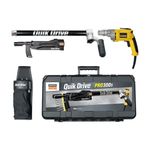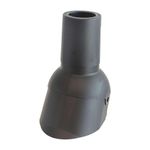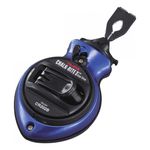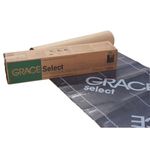Wiring as found on exist single-pole switch:
Three (3) romex wire buncles coming into box, each containing black, white, and unjacketed ground. All white wires are twisted together and capped. Two (of the three) black wires are twisted together, capped, and terminate on one end of the switch. Third black wire is terminated on the other end of the switch. All unjacketed ground wires are twisted, crimped, and terminated to the grouning post on the switch.
Wires on the new dimmer switch:
One black, one red, and one green-jacketed ground wire. Instructions for this new dimmer switch:
#1 Connect the BLACK wire to either one of the wires removed from the existing switch.
#2 Connect the RED wire to the other wire removed from the existing switch.
#3 After completing the wiring of your new dimmer, install the dimmer into the Wall Box with screws supplied. Yadda, yadda, yadda.
Amazing as nothing is mentioned about capping those wires one is connecting, let alone discern whether or not to make distinction between a ‘hot’ wire, a ‘neitral’ wire, nor a ‘ground’ wiring when making connections. BTW, this is a switch from Home Depot. Its called Commercial Electric and its a HD-brand company. I wonder if they think if they can electricute enough people their surviving spouses could afford to spend more at their store. LOL
The black & white line drawing shows the black-wire on the dimmer switch going to a black-wire in the wall box. It then shows the red-wire on the dimmer going to an unidentified wire (solid black in the drawing) in the wall box. The ground wire going to the ground wire in the wall box. And two unidentified wires in the wall box connected together (white).
Does this pre-existing wiring seem normal, and is any even the least curious as to the directions this switch is giving?
Fine Homebuilding Recommended Products

QuikDrive PRO300s

Flashing Boot Repair

Tajima Chalk Rite Chalk Line

Affordable IR Camera

Peel & Stick Underlayment















Replies
Oops, I should have said this is what I was going to attempt:
Since all three white wires from the three romex bundles are twisted and capped I will not touch them. I will disconnect the ground wire from the existing switch and terminate it on the new dimmer switch. I will take one of the black wires off of the existing switch and twist & cap it to the black wire on the new dimmer switch. I will then take the remaining black wire off of the existing switch (wired similarly to how the ground was done) and twist & cap it to the red wire on the new dimmer switch.
Sound right? Well, if I trip the breaker so be it. Wish me luck.
Sounds like your plan is fine. What appears to be happening is that there's a hot feeder coming into the box, a feeder to the light the switch is controlling, and a feed to another light or receptacle that's being fed by the same incoming hot feeder. The incoming feed and the outgoing are wired together to bypass the switch, and the hot from the line to the light is on the other side of the switch. If you leave the two blacks tied together and connect them to one side of the switch, and tie the lone black to the other side, you should be fine.
The only real question is whether the box this is all in is large enough by code for the three lines and the dimmer.
Bob
I'm betting its not. While I did get the dang thing, wires and all, back into the box its a rather tight fit. This dimmer should be called a dummer. I may return it this weekend and just get a Lutron Spacer (SP-600-HT).
What you describe is perfectly normal. The dimmer always goes between the always-hot and the sometimes-hot wires, with no neutral connection. the green ground wire, of course is connected to the other grounds.
Depending on the situation, one of the wires connected to the switch may be white. In your situation, where the main power comes into the box and then a separate wire goes out to the fixture, both wires will be black. But sometimes the main power goes to the fixture and then a "switch loop" goes to the switch. In that case the "always hot" wire should be white (though ideally marked with a strip of black tape), coming into the switch.